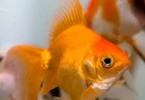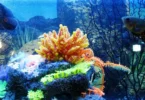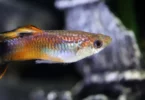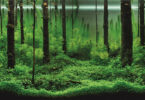Last Updated on February 16, 2023 by Jakob
IN THIS ARTICLE
The Red Sea Reef
The Red Sea Reef is a vast coral reef system located in the Red Sea, which is the northernmost tropical sea in the world. The reef stretches over 2,000 kilometers (1,240 miles) along the coastline of several countries, including Egypt, Sudan, and Eritrea.
The Red Sea Reef is one of the world’s most biodiverse reef systems, with over 1,200 species of fish and over 1,000 species of invertebrates, including many species of hard and soft corals. The reef is also home to a variety of marine mammals, including dolphins and dugongs.
Some of the key features of the Red Sea Reef include its colorful coral formations, which are home to a vast array of marine life, including reef fish, sea turtles, and rays. The reef also features a number of famous dive sites, including the wrecks of several ships that have sunk in the area.
In addition to its ecological importance, the Red Sea Reef has significant cultural and historical significance, with a number of ancient civilizations, including the Egyptians and the Greeks, using the Red Sea as a trade route for centuries. Today, the Red Sea Reef is a popular destination for scuba divers and snorkelers, who come from all over the world to explore its rich and diverse ecosystem.
Where exactly is the Red Sea Reef located?
The Red Sea Reef is located in the Red Sea, which is a long, narrow inlet of the Indian Ocean that stretches over 2,250 km (1,400 mi) between Africa and Asia. The Red Sea is bordered by several countries, including Egypt, Sudan, Eritrea, Saudi Arabia, Yemen, and Jordan.
The Red Sea Reef system stretches along the coastline of these countries, forming a complex and diverse ecosystem of coral reefs, seagrass meadows, and mangrove forests. The northern part of the Red Sea Reef is located off the coast of Egypt and is home to some of the most popular dive sites in the region, including the Straits of Tiran, Ras Mohammed, and the Thistlegorm wreck. The central and southern parts of the Red Sea Reef are located off the coasts of Sudan and Eritrea, and are known for their pristine and unspoiled reefs.
Here are the coordinates for the northernmost and southernmost points of the Red Sea Reef:
- The northernmost point of the Red Sea Reef is located at 28.0375° N, 34.4792° E, off the coast of Egypt.
- The southernmost point of the Red Sea Reef is located at 13.1135° N, 42.8405° E, off the coast of Eritrea.
The Red Sea Reef is an incredibly important and biodiverse ecosystem that is home to a wide variety of marine life, as well as being an important cultural and historical site. The region is a popular destination for scuba diving and snorkeling, and is considered one of the most spectacular diving locations in the world.
Is the Red Sea Reef under threat?
Like many other coral reef systems around the world like the great barrier reef, the Red Sea Reef is facing a number of threats that are putting its delicate ecosystem at risk. Some of the main threats to the Red Sea Reef include:
- Climate Change: Rising sea temperatures and ocean acidification caused by climate change are major threats to the Red Sea Reef. Coral reefs are highly sensitive to changes in temperature and pH levels, which can cause coral bleaching and damage to the reef’s ecosystem.
- Overfishing and Destructive Fishing Practices: Overfishing and destructive fishing practices, such as dynamite and cyanide fishing, can damage the delicate coral reef ecosystem and disrupt the balance of the marine food chain.
- Coastal Development and Pollution: Coastal development, including dredging and the construction of marinas and ports, can lead to increased sedimentation and pollution in the Red Sea, which can damage the reef’s ecosystem.
- Invasive Species: Invasive species, such as lionfish, can disrupt the balance of the reef’s ecosystem by preying on native fish and competing for resources.
Despite these threats, there are efforts underway to protect and conserve the Red Sea Reef. Many of the countries that border the Red Sea have established marine protected areas, and there are a number of conservation organizations and initiatives that are working to raise awareness about the importance of the reef and the need to protect it. With the right conservation efforts and management practices, it is possible to preserve the Red Sea Reef for future generations to enjoy.
What fish species are in the red sea reef and what fish are unique only to the red sea reef?
The Red Sea Reef is home to a wide variety of fish species, including many that are unique to the region. Here are some examples of fish species that can be found in the Red Sea Reef:
- Red Sea Anemonefish (Amphiprion bicinctus)
- Red Sea Surgeonfish (Acanthurus nigrofuscus)
- Red Sea Angelfish (Pomacanthus maculosus)
- Blue-Spotted Stingray (Neotrygon kuhlii)
- Titan Triggerfish (Balistoides viridescens)
- Emperor Angelfish (Pomacanthus imperator)
- Picasso Triggerfish (Rhinecanthus aculeatus)
- Red Sea Clownfish (Amphiprion clarkii)
- Red Sea Butterflyfish (Chaetodon austriacus)
- Red Sea Bannerfish (Heniochus intermedius)
Some fish species that are unique to the Red Sea Reef and cannot be found anywhere else in the world include:
- Red Sea Sailfin Tang (Zebrasoma desjardinii)
- Red Sea Pipefish (Dunckerocampus dactyliophorus)
- Red Sea Dottyback (Pseudochromis porphyreus)
- Red Sea Clown Triggerfish (Balistoides conspicillum)
- Red Sea Fire Goby (Nemateleotris magnifica)
These are just a few examples of the many fish species that can be found in the Red Sea Reef. The reef is home to a rich and diverse ecosystem of marine life, including hundreds of species of fish, invertebrates, and other marine organisms
Diving the Red Sea Reef:
Diving in the Red Sea Reef is a popular activity for both novice and experienced divers. Here is a guide to diving the Red Sea Reef and some highlights to see:
- Best Time to Dive: The best time to dive in the Red Sea Reef is between April and November, when the water is warm and visibility is at its best.
- Diving Conditions: The Red Sea is known for its crystal-clear waters, making it an ideal location for diving. The water temperature can range from 20°C (68°F) to 30°C (86°F) depending on the time of year, and visibility can reach up to 30 meters (100 feet).
- Dive Sites: There are many dive sites along the Red Sea Reef, each offering a unique experience. Some of the highlights include:a. Ras Mohammed: This marine reserve is located at the southern tip of the Sinai Peninsula and is home to a diverse range of marine life, including sharks, rays, and turtles.
b. Brothers Islands: These two small islands are located in the middle of the Red Sea and offer some of the best diving in the region. Highlights include sightings of hammerhead sharks and giant manta rays.
c. Elphinstone Reef: This long, narrow reef is located in the southern Red Sea and is known for its steep drop-offs and vibrant marine life, including schooling fish, sharks, and barracudas.
d. Abu Nuhas Wrecks: This collection of shipwrecks is located in the northern Red Sea and offers a unique opportunity to explore underwater history. The wrecks include the Giannis D, the Chrisoula K, and the Carnatic.
- Marine Life: The Red Sea Reef is home to a rich and diverse ecosystem of marine life. Divers can expect to see a variety of fish, including reef sharks, rays, moray eels, and colorful tropical fish. Other highlights include sightings of dolphins, sea turtles, and even dugongs.
- Safety: As with any dive, safety should be a top priority. Make sure to dive with a reputable dive operator, follow all safety protocols, and be aware of potential hazards, such as strong currents and stinging jellyfish.
Diving in the Red Sea Reef is an unforgettable experience that offers the opportunity to explore a unique and vibrant underwater world. Whether you are a seasoned diver or just starting out, the Red Sea Reef has something to offer for everyone.







